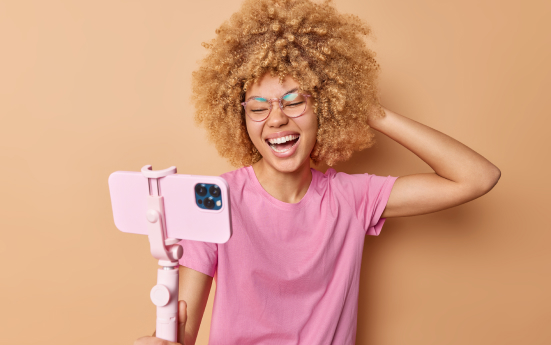Visual content is a powerful component of content marketing that can significantly enhance engagement, convey messages more effectively, and improve overall user experience. In today’s fast-paced digital world, where attention spans are short, visual content helps capture and retain audience interest. This article explores the role of visual content in content marketing and offers tips on how to use it effectively.
Why Visual Content is Important
- Enhanced Engagement
- Visual content grabs attention and encourages users to interact with your content, leading to higher engagement rates.
- Better Information Retention
- People tend to remember visual information better than text. Visuals make your content more memorable and impactful.
- Improved SEO
- Visual content can boost SEO by increasing time on site, reducing bounce rates, and generating backlinks.
- Higher Social Media Reach
- Visual content is more likely to be shared on social media, expanding your reach and visibility.
Types of Visual Content
1. Images
High-Quality Photos and Graphics
- Stock Photos: Use high-quality stock photos that are relevant to your content.
- Original Graphics: Create custom graphics to illustrate points and enhance your brand’s visual identity.
- Product Photos: Showcase your products with professional photos that highlight their features and benefits.
Example: A fashion brand uses high-quality images of their latest collection to attract and engage customers.
2. Infographics
Data Visualization
- Simplify Complex Information: Use infographics to break down complex data into easy-to-understand visuals.
- Engaging Design: Ensure your infographics are visually appealing and shareable.
Example: A marketing agency creates an infographic to explain the benefits of content marketing, using statistics and visual elements to convey the message.
3. Videos
Dynamic and Interactive Content
- Explainer Videos: Create short videos that explain your products or services.
- Tutorials and How-Tos: Provide step-by-step guides on how to use your products or achieve specific goals.
- Behind-the-Scenes: Share behind-the-scenes videos to give your audience a glimpse into your company culture.
Example: A beauty brand produces tutorial videos on how to use their makeup products, increasing user engagement and product understanding.
4. Slideshows and Presentations
Structured and Educational Content
- Webinars and Presentations: Use slideshows to deliver structured content during webinars and presentations.
- Slideshare: Share your presentations on platforms like Slideshare to reach a broader audience.
Example: A software company shares a slideshow on “The Future of AI in Business” to educate and engage their audience.
5. Interactive Content
Engaging and Immersive Experiences
- Quizzes and Polls: Create interactive quizzes and polls to engage your audience and gather insights.
- Interactive Infographics: Develop infographics that allow users to interact with the data, such as hovering over elements for more information.
Example: A fitness brand creates a quiz to help users determine the best workout plan for their goals, driving engagement and social sharing.
Tips for Using Visual Content Effectively
1. Align with Your Brand
Consistency and Recognition
- Brand Colors and Fonts: Use your brand’s colors and fonts consistently across all visual content.
- Logo and Branding Elements: Include your logo and other branding elements to reinforce brand recognition.
Example: A travel company uses their signature blue color and logo in all their travel photos and videos to maintain a cohesive brand identity.
2. Optimize for SEO
Search Visibility
- Alt Text: Add descriptive alt text to all images to improve accessibility and SEO.
- File Names: Use relevant keywords in your image file names.
- Video SEO: Optimize video titles, descriptions, and tags with relevant keywords.
Example: An e-commerce site uses descriptive alt text for product images, helping them appear in search results and improving accessibility.
3. Use High-Quality Visuals
Professionalism and Credibility
- Resolution: Ensure all images and videos are high-resolution to avoid pixelation and maintain a professional appearance.
- Editing Tools: Use editing tools to enhance the quality of your visuals.
Example: A food blog uses high-resolution, professionally edited photos of recipes to attract readers and enhance the overall aesthetic of the site.
4. Engage with Your Audience
Interaction and Feedback
- Call to Action: Include clear calls to action in your visual content to encourage user interaction.
- User-Generated Content: Encourage your audience to create and share their own content featuring your products.
Example: A sportswear brand runs a social media campaign asking customers to share photos of themselves wearing their products, using a branded hashtag.
Conclusion
Visual content plays a crucial role in content marketing by enhancing engagement, improving information retention, boosting SEO, and increasing social media reach. By incorporating high-quality images, infographics, videos, slideshows, and interactive content, you can create a more engaging and effective content marketing strategy. Use these tips to align your visual content with your brand, optimize for SEO, and engage with your audience, driving better results for your business.

